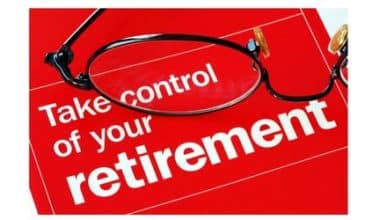Paying via money orders or cashier’s checks has long been a requirement for landlords, especially for new tenants or those with a financial history of late payments. They are both referred to as certified funds. Residents of multifamily buildings who are required to pay with certified funds can now do it without leaving the comfort of their homes, thanks to real-time financial verification data. So without ado, let’s see what certified entails.
Certified Funds
A certified check, which guarantees payment, is the most typical example of certified funds. The sale of a secondhand car by an individual in a neighboring state is one example. You could pay the seller with cash straight from your bank account, but that’s not a good idea because carrying a lot of cash is dangerous. Even if you were to write a personal check to the buyer, he would almost certainly not release you to drive away in the vehicle until he confirmed the check was valid.
One possible solution is to use a certified check as payment to the buyer. This ensures that the bank will cash the check. The first step is to visit the branch of your bank that is closest to you. This is one of those times when doing business in person is likely to be easier and less hasslesome. You communicate your desire for a certified check in the specified amount to the teller. After the teller checks your account balance, she will give you a certified check that you must sign in her presence.
One more typical form of certified funds, occasionally used in real estate closings, is a letter of certification from your bank supporting the payment. A real estate buyer, for example, can receive the promised sum from the issuing bank (through a slightly different medium), but the message remains the same: the bank will pay the amount upon proper demand. When your bank issues a letter confirming funds, it places a hold on your account for the certified amount, much like when you receive a certified check.
Both certified checks and cashier’s checks theoretically provide certified funds. A certified check requires your signature, but a cashier’s check requires the bank’s. That’s about it. Obviously, both are fine in theory.
Overall
Digital-certified funds provide a paperless platform for multifamily property operators' front desks.
The resident can pay their rent online with a validated payment using a desktop browser or mobile device. The first step is to confirm the user's identification and the owner's bank account. The next step in authorizing a certified transaction is to continuously analyze the user's transactional and behavioral data. This settles the user's cash risk-free to the property and enables the capture of monies from their banking institution.Certified Funds Check
A certified check or certified fund check is a personal check for which the payer’s bank has allocated the money and certified it to be valid. It is a form of “official” money transfer. Certified checks and cashier’s checks are frequently confused. When comparing certified checks to cashier’s checks, what are the key differences?
If you want to draw on your own money and have the bank vouch for it, you can do it with a certified check. The certification process earmarks the funds for that particular check and physically marks it to indicate that it is now a certified check. No other justification will get the funds released by most banks.
A bank-backed check is known as a cashier’s check. To pay the amount of the cashier’s check, the bank will take the money from the individual requesting it and put it in an escrow account. After that, the bank will use the money they have on hand to print a check. Mo isney orders drawn from a cashier’s or certified bank account are both “official” and “guaranteed” forms of payment.
Example of Certified Funds
While you should confirm your landlord’s expectations for certified funds, some options are certified checks, cashier’s checks, money orders, and wire transfers.
#1. Certified Check
This typically comes from a bank and confirms that there are enough funds in the tenant’s bank account to cover the payment. The teller may set aside the amount of the check so that it is available when the check is cashed.
#2. Cashier’s Check
The tenant’s actual bank issues a cashier’s check. The bank withdraws funds from the account and guarantees the check’s amount. Landlords do not need to worry about payments because the money has already been deducted.
#3. Money Order
A bank, convenience store, or post office can all issue money orders. The renter transfers the funds to the issuing authority, who subsequently issues the money order to the landlord. The landlord is not at risk because the tenant has already paid.
#4. Wire Transfer
Online wire transfers from the tenant’s bank account to the landlord’s bank account may also be accepted as payment. Because there may be a waiting period as well as significant fees, this is rarely employed in the rental market.
#5. Cash
Cash is another alternative for receiving monthly rental payments that is rather straightforward.
How to Pay With Certified Funds
There are a few options for paying with certified funds.
1. To receive a cashier’s check, you must go to a bank branch in person, where a teller will assist you. You can then mail the physical check to the desired recipient.
2. Many banks allow you to send wire transfers online, or a bank teller can assist you in setting one up.
3. You must go to a local merchant to receive a money order. You will personally deliver the money order to its appropriate recipients after you have obtained it. Sending money orders in the mail is not a smart idea.
Takeaway: Certified funds are secure to use because a bank or other financial institution is backing them. Early in the leasing process, a lot of landlords and property management firms mandate that tenants use certain approved cash to prevent returned checks and unsuccessful debit payments. How Do I Get Certified Funds From My Bank?
Go to the bank’s local branch. Tell the teller that you need a certified check and inquire about any further instructions. In front of the teller, write the check. Present your ID to the cashier.
Is a Cashier’s Check Certified Funds?
A cashier’s check takes funds from a financial institution’s account. A certified check is a check that uses funds from a customer’s account. Cashier’s checks are typically more secure than certified checks. The fee for purchasing a cashier’s check is usually cheaper than the fee for purchasing a certified check.
Is ACH a Certified Fund?
Up to 90 days following the transfer, the individual sending the ACH might unilaterally recall the transfer. This does not meet the criteria for adequate funding. ACH credits are not “guaranteed funds” and hence cannot be accepted by any banking institution.
Can a Bank Hold Certified Funds?
Financial institutions can and have placed holds on trust checks, certified checks, and bank drafts. A hold could be for as little as one day or as long as four days or more.
Is a Wire Transfer Considered Certified Funds?
Certified funds, whether wire transfer or cashier’s check, are the title company’s technique of ensuring that both parties’ funds are in good condition.
Read also: Stockholders Equity: What Is It and How Do You Find It?
Is a Bank Money Order Certified Funds?
The seller will need verified cash, typically in the form of a certified check, to complete the transaction. Canadian bank draft, often known as a cashier’s check
How Do I Get Certified Funds Without a Bank Account?
Money orders can be obtained from various locations, such as the U.S. Postal Service, Walmart, and select convenience stores, without the requirement of a bank account.
What Is the Downside of Cashier Checks?
Counterfeit cashier’s checks pose a significant risk of fraud. Cashier’s checks are non-refundable. Refunds for the funds used to purchase the items may not be available.
Conclusion
Landlords frequently require certified funds to ensure the safe transfer of funds to their designated bank account. Moreover, certified funds encompass various forms such as cashier checks, bank checks, money orders, cash, and wire transfers.
Certified funds are typically required before occupancy. After moving in, landlords generally accept various forms of payment, such as personal checks, debit cards, credit cards, and other payment methods.
- CERTIFIED PUBLIC ACCOUNTANT
- Can You Buy a Money Order With a Credit Card?
- How to Send Invoices: The Complete Guide






